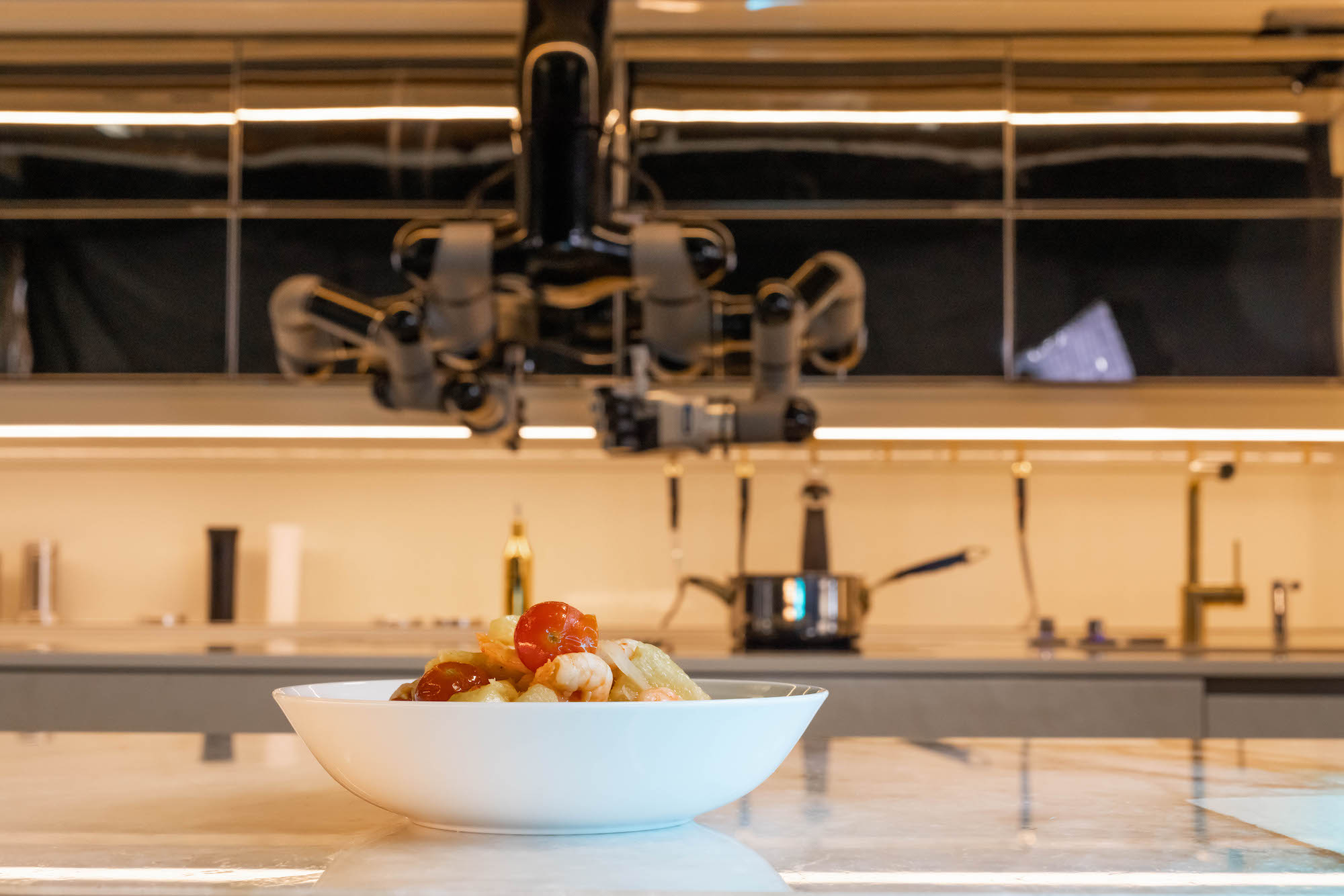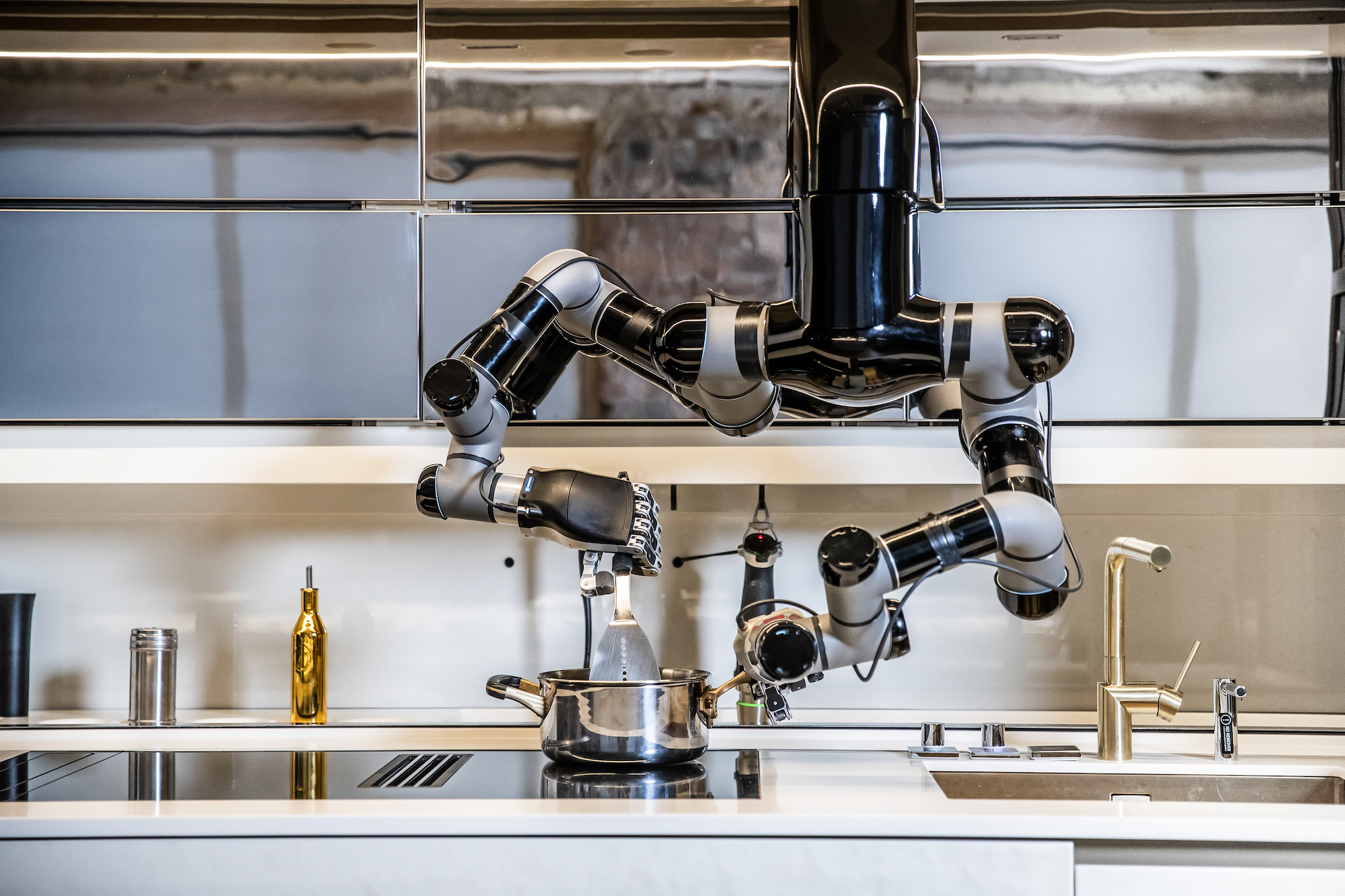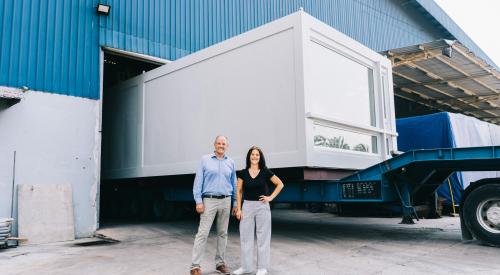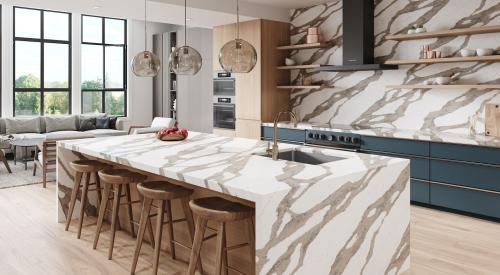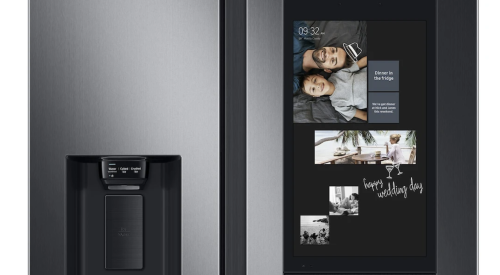Imagine coming home from work exhausted and hungry. You don’t want to cook, takeout can be unhealthy and expensive… But what if you had someone—or something—to cook a fresh meal for you?
It all started with Dr. Mark Oleynik, a computer scientist and healthcare innovator based in London. In 2014 he developed the idea for Moley, and built an international team to develop the breakthrough product. More than five years later, the world’s first robotic kitchen went to market.
However, Moley is more than a pair of robotic hands. While the arms do the cooking, the brains behind the machine come from the Guided User Interface (GUI). The system works cohesively in order to create a time-saving system for the homeowner.
THE ROBOTIC KITCHEN OF THE FUTURE
The Moley team wants their robotic kitchen to make consumers’ lives smarter, not harder.
As your personal chef, Moley only requires you to prepare ingredients and store them in Moley containers ahead of time—the robot does the rest. According to the team, users can either order ready-to-cook ingredients that come shipped to their door, or cut and slice fresh ingredients themselves.
Moley is even smart enough to alert you when your ingredient supply is low, and suggests meals based on what you have in the fridge. The fridge even comes in eight separate sections to maintain optimum temperature for different ingredients, according to Moley, complete with automatic doors.
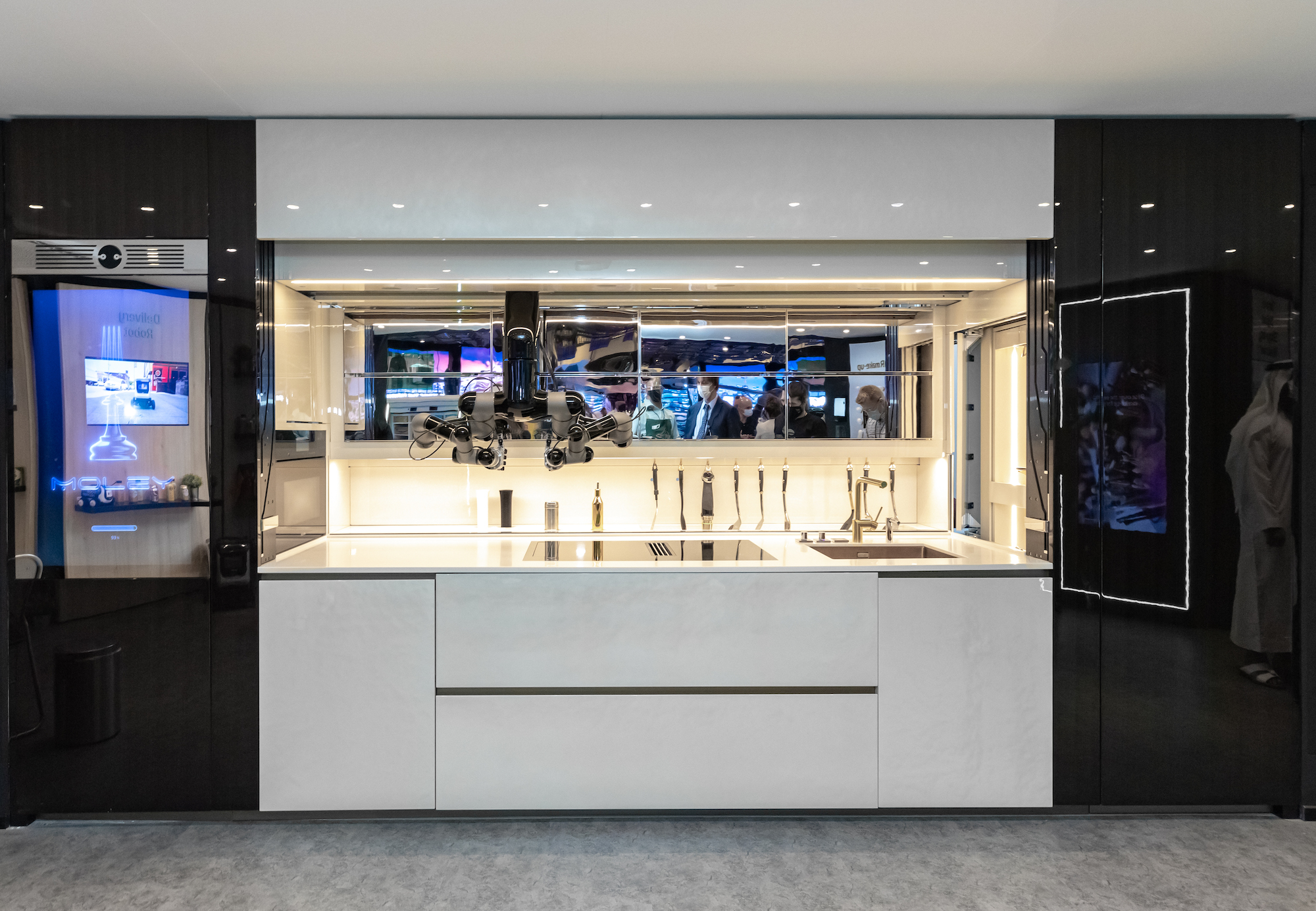
The Moley kitchen comes with thousands of recipes loaded into its system, as well as cooking tips from professional chefs around the globe. Additionally, homeowners who love to put on a chef’s hat every so-often are fully able to cook meals on their own, without Moley’s assistance.
The pots and pans have handles that are sleek and comfortable for human use. The kitchen’s smart appliance storage is designed not only for Moley’s sensory detection capabilities, but is also functionally available for a human to use.
MANY HANDS MAKE LIGHT WORK
One of the most important features of this fully robotic kitchen is the ergonomic design of Moley’s hands.
Being the first of its kind, the robot’s sophisticated hands were developed exclusively with SCHUNK, a robotics company that specializes in clamping technology and gripping systems for robotic armatures.
SCHUNK also has a hand (pun intended) in the healthcare industry, as machines offer extremely accurate automation for lab processes and handling of sensitive substances.
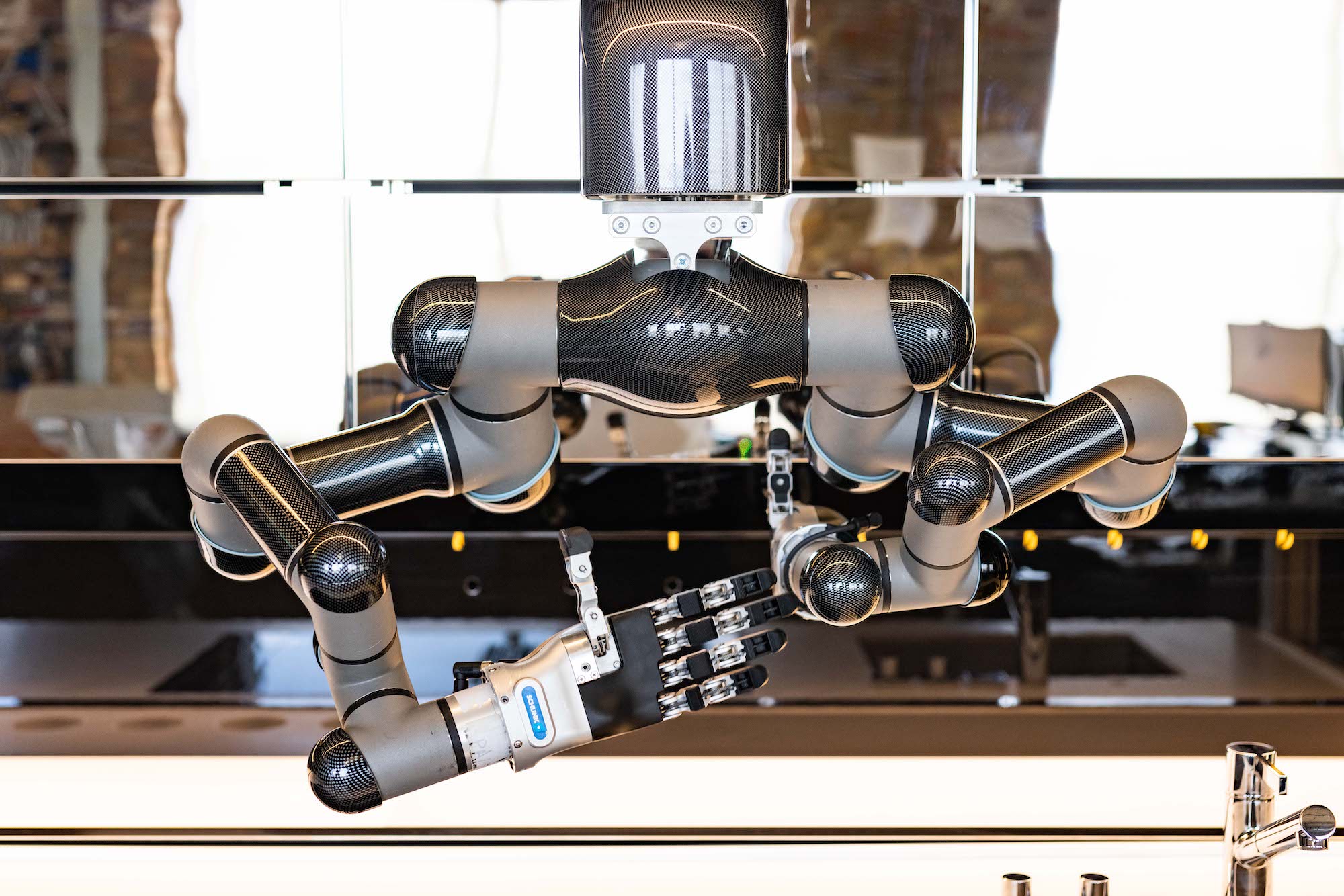
The anthropomorphic design allows for Moley to replicate human arm and hand movement—quite the technological innovation.
After going through 11 development cycles, Moley’s hands are capable of sensing and adjusting pressure in the fingers, operating touchscreen controls, cleaning up the counterspace, and even learning how to use new pieces of equipment.
Oh, and did I mention that each Moley kitchen is customizable and unique to the homeowner? Now that sounds like the future. According to the Moley Twitter page, you may have to shell out a good £150–250k ($200–330k in US dollars) for the product, though.
The potential of this fully robotic kitchen has already garnered the attention of restaurant owners, hotels, and catering professionals. The Moley team plans to continue developing the product enough to be able to support a variety of commercial kitchens.
So who knows, maybe the next continental breakfast you eat will be served to you by the hands of a robot—on a silver, Moley-brand platter.
